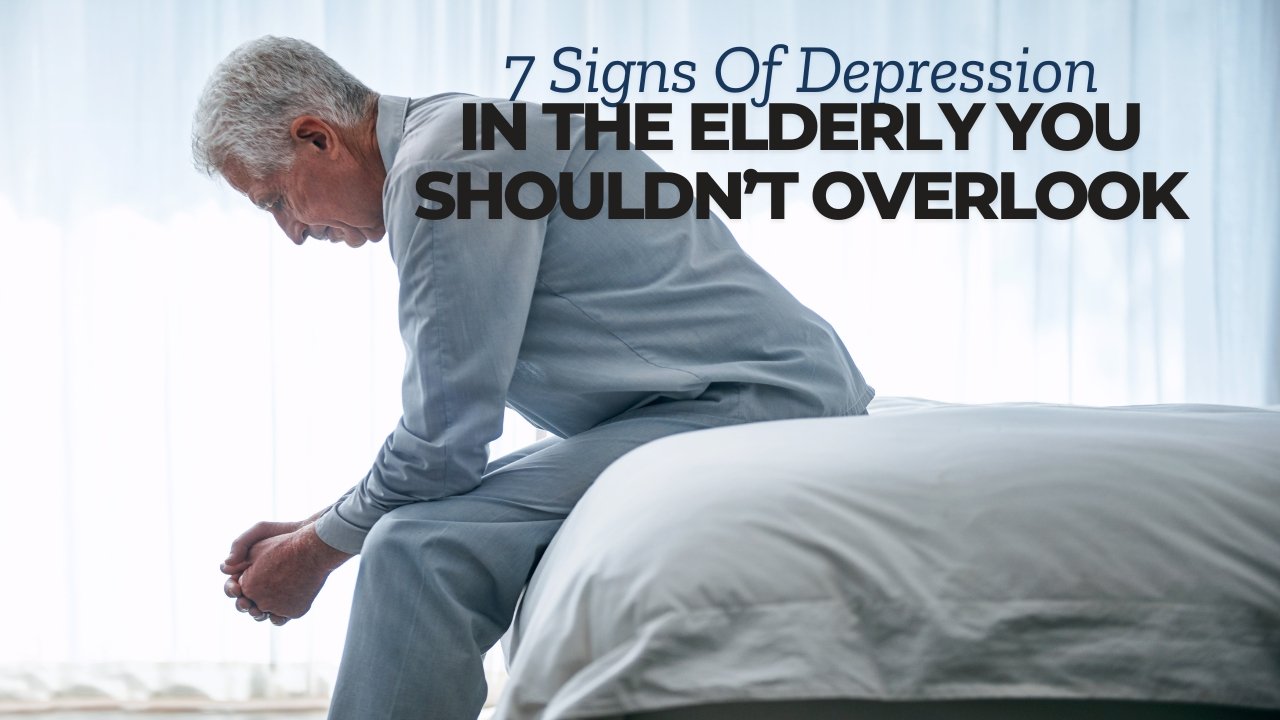

Trauma and Anxiety: Addressing the Root Causes of Post-Traumatic Stress
- No Comments
Trauma and anxiety often walk hand-in-hand, creating a complex web that can significantly affect one’s quality of life. Trauma typically refers to an emotional response to a deeply distressing or disturbing event. This can range from personal experiences like abuse or accidents to broader events like natural disasters or war. Anxiety, on the other hand, encompasses feelings of worry, nervousness, or fear that can be mild or severe.
When trauma occurs, it can trigger anxiety, leading to a condition known as Post-Traumatic Stress Disorder (PTSD). Addressing the root causes of post-traumatic stress is crucial for effective trauma recovery and anxiety management. In this blog post, we will delve into the definitions, symptoms, and treatments for trauma and anxiety, offering practical strategies for healing and maintaining psychological well-being.
What is Trauma?
Trauma can manifest in various forms, each affecting individuals differently. Here are the main types:
- Physical Trauma: Injuries to the body, often due to accidents or violence.
- Emotional Trauma: Deep emotional wounds caused by events like loss, betrayal, or abuse.
- Psychological Trauma: Severe mental distress resulting from events like natural disasters, war, or witnessing violence.
Common Sources of Trauma:
- Accidents: Car crashes, workplace injuries, or falls.
- Abuse: Physical, emotional, or sexual abuse.
- Natural Disasters: Earthquakes, hurricanes, or floods.
- Violence: Assault, robbery, or witnessing violent acts.
- Loss: Death of a loved one, divorce, or job loss.
Understanding these sources helps in identifying the root causes of trauma, which is essential for effective trauma recovery.
How Trauma Affects the Brain
The impact of trauma on the brain is profound and multifaceted. When a traumatic event occurs, the brain’s amygdala—the region responsible for emotional processing—becomes hyperactive. This can lead to heightened fear and anxiety. Additionally, trauma affects the hippocampus, which is involved in memory formation. This can result in fragmented or vivid memories of the traumatic event.
Neurobiological Changes Due to Trauma:
- Increased Cortisol Levels: Prolonged stress from trauma can elevate cortisol, the stress hormone, leading to various health issues.
- Altered Brain Structure: Chronic trauma can cause changes in brain structure, particularly in areas related to emotional regulation and memory.
- Impaired Neurotransmitter Function: Trauma can disrupt the balance of neurotransmitters, affecting mood and behavior.
Understanding these changes is crucial for developing effective trauma-informed care strategies. By addressing these neurobiological factors, we can better support individuals on their path to healing from trauma.
Understanding Anxiety
Anxiety, a common mental health condition, affects millions of people worldwide. It manifests through worry, nervousness, or fear, ranging from mild to severe. Unlike regular stress, anxiety can persist even without an immediate threat, impacting daily functioning.
Symptoms of Anxiety:
- Emotional Symptoms:
- Excessive worry or fear
- Feelings of dread or apprehension
- Irritability or restlessness
- Physical Symptoms:
- Increased heart rate
- Shortness of breath
- Sweating or trembling
- Gastrointestinal issues
How Anxiety Manifests in Daily Life:
- Social Situations: Avoiding social gatherings or feeling overly self-conscious.
- Work or School: Difficulty concentrating, procrastination, or frequent absences.
- Personal Relationships: Strained interactions, constant reassurance-seeking, or conflict avoidance.
Understanding these symptoms and manifestations is crucial for effective anxiety management. By recognizing the signs, individuals can seek appropriate help and employ coping mechanisms to manage their anxiety.
The Link Between Trauma and Anxiety
The relationship between trauma and anxiety is intricate and often reciprocal. Trauma can serve as a significant trigger for anxiety disorders, including PTSD. When someone experiences a traumatic event, their brain’s fear response becomes heightened, making them more susceptible to anxiety.
How Trauma Can Lead to Anxiety Disorders:
- Hypervigilance: Constantly being on alert for potential threats.
- Avoidance: Steering precise places, people, or activities that remind them of the trauma.
- Intrusive Thoughts: Recurrent, unwanted thoughts about the traumatic event.
Examples of Trauma-Induced Anxiety:
- Combat Veterans: Many veterans experience PTSD and anxiety due to the horrors of war.
- Survivors of Abuse: Individuals who have suffered physical, emotional, or sexual abuse often struggle with anxiety.
- Accident Victims: Those who have been in severe accidents may develop anxiety related to driving or traveling.
Understanding this link is essential for providing trauma-informed care. By addressing both the trauma and the resultant anxiety, we can develop more comprehensive mental health strategies for healing and recovery.
Post-Traumatic Stress Disorder (PTSD)
What is PTSD?
Post-Traumatic Stress Disorder (PTSD) is a mental health condition triggered by experiencing or witnessing a traumatic event. PTSD can develop after events such as military combat, natural disasters, serious accidents, or violent personal assaults. It is characterized by a range of symptoms that can significantly impair one’s ability to function in daily life.
Diagnostic Criteria of PTSD:
According to the DSM-5 (Diagnostic and Statistical Manual of Mental Disorders, Fifth Edition), the criteria for diagnosing PTSD include:
- Exposure to Trauma:
- Directly experiencing the traumatic event.
- Witnessing the event occurring to others.
- Learning that the traumatic event happened to a close family member or friend.
- Experiencing repeated or extreme exposure to aversive details of the traumatic event (e.g., first responders).
- Intrusive Symptoms:
- Recurrent, involuntary, and intrusive distressing memories of the traumatic event.
- Recurrent distressing dreams related to the event.
- Dissociative reactions (e.g., flashbacks) where the individual feels or acts as if the traumatic event is recurring.
- Intense or prolonged psychological distress at exposure to cues that symbolize or resemble an aspect of the traumatic event.
- Marked physiological reactions to reminders of the traumatic event.
- Avoidance Symptoms:
- Avoidance of or efforts to avoid distressing memories, thoughts, or feelings about or closely associated with the traumatic event.
- Avoidance of or efforts to avoid external reminders (people, places, activities) that arouse distressing memories, thoughts, or feelings about the traumatic event.
- Negative Alterations in Cognition and Mood:
- Inability to remember an important aspect of the traumatic event.
- Persistent and exaggerated negative beliefs or expectations about oneself, others, or the world.
- Persistent, distorted cognitions about the cause or consequences of the traumatic event lead to self-blame.
- Persistent negative emotional state (e.g., fear, horror, anger).
- Markedly diminished interest or participation in significant activities.
- Feelings of detachment or estrangement from others.
- Persistent inability to experience positive emotions.
- Alterations in Arousal and Reactivity:
- Irritable behavior and angry outbursts.
- Reckless or self-destructive behavior.
- Hypervigilance.
- Exaggerated startle response.
- Problems with concentration.
- Sleep disturbances.
PTSD Symptoms and Their Impact
The symptoms of PTSD can be debilitating and affect various aspects of an individual’s life. Here are some common symptoms and their potential impact:
Emotional Symptoms:
- Intrusive Memories: Flashbacks and nightmares can cause significant emotional distress.
- Hyperarousal: Constantly feeling on edge can lead to irritability and difficulty sleeping.
- Emotional Numbness: Difficulty experiencing positive emotions can strain relationships and reduce quality of life.
Physical Symptoms:
- Chronic Pain: Some individuals may experience unexplained physical pain or discomfort.
- Gastrointestinal Issues: Stress and anxiety can lead to stomach problems and other digestive issues.
- Fatigue: Constant hypervigilance and sleep disturbances can result in chronic fatigue.
Impact on Daily Functioning:
- Work: Difficulty concentrating and increased absenteeism can affect job performance.
- Social Life: Avoidance of social situations and emotional numbness can lead to isolation.
- Personal Relationships: Strained interactions and emotional withdrawal can affect relationships with family and friends.
Understanding these symptoms and their impact is crucial for developing effective trauma-informed care strategies. By addressing both the emotional and physical aspects of PTSD, we can provide more comprehensive support for those affected.
Root Causes of Post-Traumatic Stress
Understanding the root causes of post-traumatic stress is essential for effective treatment and recovery. While the immediate cause of PTSD is exposure to a traumatic event, several underlying factors can influence how an individual responds to trauma.
Common Root Causes of PTSD:
- Severity and Duration of Trauma: More severe and prolonged trauma increases the risk of PTSD.
- Previous Trauma Exposure: Individuals with a history of trauma are more susceptible to developing PTSD.
- Personal Characteristics: Factors such as age, gender, and personality traits can influence PTSD risk.
- Social Support: Lack of support from family and friends can exacerbate PTSD symptoms.
- Coping Mechanisms: Ineffective coping strategies can hinder recovery from trauma.
How to Identify Personal Triggers:
- Self-Reflection: Keeping a journal to note situations or thoughts that trigger PTSD symptoms.
- Therapy: Working with a mental health professional to identify and understand personal triggers.
- Mindfulness: Practicing mindfulness techniques to become more aware of emotional and physical responses to triggers.
Trauma-Informed Care
Trauma-informed care is an approach that acknowledges the widespread impact of trauma and integrates this understanding into all aspects of care. It aims to create a safe and supportive environment for individuals with a history of trauma.
Principles of Trauma-Informed Care:
- Safety: Ensuring physical and emotional safety for individuals seeking care.
- Trustworthiness and Transparency: Building trust through clear communication and consistent practices.
- Peer Support: Incorporating peer support to promote healing and recovery.
- Collaboration and Mutuality: Fostering collaboration between providers and individuals.
- Empowerment, Voice, and Choice: Empowering individuals by prioritizing their strengths and encouraging active participation in their care.
- Cultural, Historical, and Gender Issues: Recognizing and addressing cultural, historical, and gender-specific factors in care.
Importance of a Trauma-Informed Approach in Treatment:
- Reduces Re-traumatization: By understanding and addressing trauma, care providers can avoid practices that may inadvertently re-traumatize individuals.
- Builds Trust: A trauma-informed approach fosters trust and rapport between individuals and care providers.
- Enhances Recovery: Trauma-informed care can enhance the effectiveness of treatment and recovery by creating a supportive and understanding environment.
Integrating trauma-informed care into mental health strategies is crucial for addressing the root causes of post-traumatic stress. By recognizing the impact of trauma and providing compassionate, individualized care, we can support individuals on their journey to healing.
Healing from Trauma
Healing from trauma is a multifaceted journey that involves addressing emotional, physical, and psychological aspects. Trauma recovery doesn’t follow a linear path; it varies from person to person, depending on the nature of the trauma and individual coping mechanisms.
Steps to Begin the Recovery Process:
- Acknowledge the Trauma: Recognizing and accepting that the trauma occurred is the first step towards healing.
- Seek Professional Help: Consulting a mental health professional can provide guidance and support tailored to individual needs.
- Build a Support Network: Surrounding oneself with supportive friends and family can provide emotional and practical support.
- Practice Self-Care: Engaging in activities that promote physical and mental well-being, such as exercise, healthy eating, and adequate sleep.
- Set Realistic Goals: Breaking down recovery into manageable steps can make the process less overwhelming.
Importance of Seeking Professional Help:
- Expert Guidance: Mental health professionals can offer evidence-based treatments and coping strategies.
- Safe Space: Therapy provides a safe environment to explore and process traumatic experiences.
- Personalized Care: Professional help can be tailored to address specific symptoms and needs.
Trauma Therapy Options
Various therapy options are available for trauma recovery, each with its approach and benefits. Choosing the right therapy depends on the individual’s preferences, the nature of the trauma, and the severity of symptoms.
Different Types of Trauma Therapy:
- Eye Movement Desensitization and Reprocessing (EMDR):
- What it is: A therapy that uses guided eye movements to process and integrate traumatic memories.
- Benefits: Effective in reducing PTSD symptoms and emotional distress.
- Cognitive Behavioral Therapy (CBT):
- What it is: A therapy that changes negative thought patterns and behaviors.
- Benefits: Helps identify and challenge unhelpful thoughts related to the trauma.
- Exposure Therapy:
- What it is: A therapy that involves gradually exposing individuals to trauma-related memories or situations in a controlled environment.
- Benefits: Reduces avoidance behaviors and helps individuals confront and process traumatic memories.
- Somatic Experiencing:
- What it is: A therapy that focuses on releasing trauma stored in the body through physical sensations and movements.
- Benefits: Addresses the physical manifestations of trauma and promotes body awareness.
How to Choose the Right Therapy:
- Consult a Professional: Seeking advice from a mental health professional can help determine the most suitable therapy.
- Consider Personal Preferences: Choosing a therapy that aligns with personal comfort and beliefs can enhance engagement and effectiveness.
- Evaluate Progress: Regularly assessing progress and making adjustments as needed can ensure the therapy continues to meet individual needs.
By exploring different therapy options and finding the right fit, individuals can take significant steps towards healing from trauma and improving their overall mental health.
Coping Mechanisms for Anxiety
Managing anxiety effectively requires a combination of strategies tailored to individual needs. Coping mechanisms can help mitigate anxiety symptoms and improve overall quality of life.
Practical Strategies for Managing Anxiety:
- Deep Breathing Exercises:
- How to do it: Practice slow, deep breaths, inhaling through the nose and exhaling through the mouth.
- Benefits: Reduces physiological arousal and promotes relaxation.
- Regular Physical Activity:
- Types of exercise: Walking, running, yoga, or any physical activity you enjoy.
- Benefits: Endorphins, which are natural mood lifters, are released.
- Healthy Lifestyle Choices:
- Diet: Consuming a balanced diet rich in nutrients.
- Sleep: Ensuring adequate and quality sleep.
- Hydration: Staying well-hydrated throughout the day.
- Time Management:
- Planning: Using planners or digital tools to organize tasks.
- Prioritizing: Focusing on important tasks and breaking them into manageable steps.
- Social Support:
- Connecting with Others: Spending time with friends and family.
- Support Groups: Joining groups for people with similar experiences.
- Mindfulness and Meditation:
- Practices: Engaging in mindfulness exercises or guided meditation.
- Benefits: Improves focus and reduces anxiety by promoting present-moment awareness.
Mindfulness Techniques
Mindfulness techniques effectively manage anxiety by fostering a sense of calm and presence. These practices can be easily integrated into daily routines.
Benefits of Mindfulness for Anxiety:
- Reduces Stress: Mindfulness lowers cortisol levels, the stress hormone, which can help reduce anxiety.
- Enhances Emotional Regulation: By increasing awareness of thoughts and feelings, mindfulness helps manage emotional responses.
- Improves Focus: Mindfulness practices enhance concentration and reduce distractions.
Simple Mindfulness Exercises to Try:
- Body Scan:
- How to do it: Lie down and mentally scan your body from head to toe, noting any areas of tension.
- Benefits: Promotes relaxation and body awareness.
- Mindful Breathing:
- How to do it: Focus on your breath, observing each inhale and exhale without trying to change it.
- Benefits: Calms the mind and reduces anxiety.
- Mindful Walking:
- How to do it: Pay attention to the sensations of walking, such as the feel of your feet on the ground and the rhythm of your steps.
- Benefits: Combines physical activity with mindfulness, enhancing overall well-being.
- Gratitude Practice:
- How to do it: Spend a few minutes each day reflecting on things you are grateful for.
- Benefits: Shifts focus from anxiety to positive aspects of life.
By incorporating these mindfulness techniques into daily life, individuals can develop effective anxiety management strategies that enhance emotional resilience and psychological well-being.
Building Emotional Resilience
Emotional resilience is adapting and recovering from stress, adversity, or trauma. Building resilience can significantly enhance one’s capacity to handle life’s challenges and reduce the impact of trauma and anxiety.
Importance of Emotional Resilience in Trauma Recovery:
- Improves Coping: Resilience helps develop effective coping mechanisms to manage stress and anxiety.
- Enhances Recovery: Resilient individuals are better equipped to bounce back from traumatic events.
- Promotes Wellbeing: Emotional resilience contributes to overall mental and emotional health.
Techniques to Build Resilience:
- Cultivate a Positive Outlook:
- Practice Gratitude: Regularly reflecting on things you are thankful for.
- Positive Affirmations: Repeating positive statements about oneself and the future.
- Develop Strong Relationships:
- Social Connections: Building and maintaining supportive relationships with family and friends.
- Community Involvement: Participating in community activities or volunteering.
- Set Realistic Goals:
- Short-term Goals: Breaking down larger goals into smaller, manageable steps.
- Celebrate Progress: Acknowledging and celebrating achievements, no matter how small.
- Practice Self-Compassion:
- Self-Kindness: Treat yourself with the same kindness and understanding as a friend.
- Mindful Self-Care: Engaging in activities that nurture your physical, emotional, and mental health.
- Learn from Experience:
- Reflection: Reflecting on past experiences and identifying lessons learned.
- Adaptability: Being open to change and willing to adapt to new circumstances.
Post-Traumatic Growth
Post-traumatic growth (PTG) refers to the positive psychological changes that can occur as a result of struggling with highly challenging life circumstances. While trauma can be devastating, it can also lead to significant personal growth.
Concept of Post-Traumatic Growth:
- Enhanced Personal Strength: Realizing inner strength and resilience that one was previously unaware of.
- Improved Relationships: Developing deeper, more meaningful relationships and increased empathy.
- New Possibilities: Discovering new opportunities and paths in life that were not considered before the trauma.
- Spiritual Growth: Experiencing a deepened sense of spirituality or existential change.
- Appreciation for Life: Developing a greater appreciation for life and a renewed sense of purpose.
How to Leverage Trauma for Personal Growth:
- Reflect on the Experience:
- Journaling: Writing about the trauma and the emotions it evoked.
- Therapy: Discussing the trauma with a mental health professional to gain insights and perspectives.
- Find Meaning:
- Purposeful Activities: Engaging in activities that provide a sense of purpose and fulfillment.
- Helping Others: Using your experience to support and inspire others facing similar challenges.
- Embrace Change:
- Open-mindedness: Being open to new experiences and perspectives.
- Flexibility: Adapting to changes and viewing them as opportunities for growth.
- Develop New Skills:
- Learning Opportunities: Taking up new hobbies or skills that can provide a sense of accomplishment.
- Personal Development: Engaging in activities that promote personal growth and self-improvement.
By focusing on building emotional resilience and embracing the concept of post-traumatic growth, individuals can transform their trauma into a catalyst for positive change and personal development.
Effective Stress Reduction Techniques
Managing stress is crucial for overall mental health and can significantly aid in trauma recovery and anxiety management. Implementing effective stress reduction techniques can help individuals cope with daily challenges and maintain emotional balance.
Daily Practices to Reduce Stress:
- Exercise Regularly:
- Types of Exercise: Aerobic exercises like walking, running, cycling, or swimming.
- Benefits: Physical activity releases endorphins, which are natural stress relievers.
- Healthy Diet:
- Balanced Nutrition: Consuming a diet rich in fruits, vegetables, lean proteins, and whole grains.
- Hydration: Drinking plenty of water to stay hydrated.
- Sleep Hygiene:
- Consistent Sleep Schedule: Going to bed and waking up simultaneously each day.
- Sleep Environment: Creating a comfortable and quiet sleep environment.
- Mindfulness and Relaxation Techniques:
- Meditation: Practicing mindfulness meditation to calm the mind.
- Deep Breathing: Engaging in deep breathing exercises to reduce physiological arousal.
- Time Management:
- Prioritizing Tasks: Using tools like to-do lists and planners to organize tasks.
- Breaks: Taking regular breaks to avoid burnout and maintain productivity.
- Engage in Hobbies:
- Creative Activities: Participating in creative activities like painting, writing, or playing music.
- Leisure Activities: Engaging in leisure activities that bring joy and relaxation.
Long-Term Strategies for Stress Management
For sustained stress reduction, it’s essential to adopt long-term strategies that promote resilience and emotional well-being.
Long-Term Strategies for Stress Management:
- Develop Healthy Relationships:
- Social Support: Building and maintaining supportive relationships with friends and family.
- Communication: Practicing open and honest communication to resolve conflicts and strengthen bonds.
- Pursue Personal Growth:
- Learning and Development: Continuously seeking opportunities for personal and professional development.
- Self-Reflection: Regularly reflecting on personal experiences and growth.
- Set Realistic Goals:
- Goal Setting: Setting achievable and meaningful goals.
- Progress Monitoring: Regularly assess progress and make adjustments as needed.
- Practice Gratitude:
- Daily Gratitude: Keeping a gratitude journal to note things you are thankful for daily.
- Positive Focus: Shifting focus from stressors to positive aspects of life.
- Seek Professional Help:
- Therapy: Consult a mental health professional for guidance and support.
- Support Groups: Joining support groups for shared experiences and mutual support.
By incorporating these daily practices and long-term strategies, individuals can effectively manage stress and enhance their overall psychological well-being.
Psychological Wellbeing
Maintaining psychological well-being is essential for overall health and quality of life. It involves nurturing emotional, mental, and social aspects to create a balanced and fulfilling life. This is particularly crucial for those recovering from trauma or managing anxiety.
Importance of Psychological Wellbeing:
- Improves Quality of Life: Good mental health enhances daily functioning and life satisfaction.
- Reduces Risk of Mental Illness: Maintaining psychological well-being can prevent the onset of mental health disorders.
- Enhances Resilience: Strong mental health equips individuals to handle stress and adversity better.
Tips for Maintaining Mental Health Post-Trauma:
- Self-Care Practices:
- Physical Health: Regular exercise, a balanced diet, and adequate sleep.
- Emotional Health: Engaging in activities that bring joy and relaxation.
- Mindfulness and Meditation:
- Mindfulness Practices: Engaging in mindfulness exercises to stay present and reduce anxiety.
- Meditation: Regular meditation to promote mental clarity and emotional balance.
- Healthy Relationships:
- Social Connections: Maintaining supportive relationships with friends and family.
- Healthy Boundaries: Setting boundaries to protect mental and emotional health.
- Professional Support:
- Therapy: Regular sessions with a mental health professional.
- Support Groups: Joining groups for shared experiences and mutual support.
- Positive Thinking:
- Gratitude Practices: Keeping a gratitude journal to focus on positive aspects of life.
- Positive Affirmations: Using affirmations to foster a positive mindset.
Recognizing Anxiety Triggers
Identifying and managing anxiety triggers is a crucial aspect of maintaining psychological well-being. Triggers are specific situations, people, or environments that can induce anxiety symptoms.
How to Identify and Manage Anxiety Triggers:
- Self-Monitoring:
- Journaling: Keeping a journal to note situations that trigger anxiety.
- Mindfulness: Practicing mindfulness to become more aware of emotional and physical responses to triggers.
- Therapy:
- Professional Guidance: Working with a mental health professional to identify and understand personal triggers.
- Cognitive Behavioral Therapy (CBT): Using CBT techniques to challenge and change negative thought patterns related to triggers.
- Developing Coping Strategies:
- Exposure Therapy: Gradually exposing oneself to triggers in a controlled environment.
- Relaxation Techniques: Using deep breathing, meditation, or progressive muscle relaxation to manage anxiety.
- Avoidance and Adaptation:
- Limit Exposure: Avoiding or limiting exposure to known triggers when possible.
- Adaptation: Developing strategies to cope with unavoidable triggers.
Strategies to Avoid or Cope with Triggers:
- Preparation: Preparing mentally and emotionally for situations that might trigger anxiety.
- Support System: Leaning on friends, family, or support groups for assistance.
- Self-Compassion: Practicing self-compassion and understanding that it’s okay to feel anxious.
By recognizing and managing anxiety triggers, individuals can maintain better psychological well-being and reduce the impact of anxiety on their daily lives.
Summarizing Key Points
Addressing the root causes of post-traumatic stress is essential for effective trauma recovery and anxiety management. By understanding the intricate relationship between trauma and anxiety, identifying PTSD symptoms, and employing comprehensive mental health strategies, individuals can embark on a path toward healing and psychological well-being.
Key Takeaways:
- Understanding Trauma and Anxiety: Recognizing the various forms of trauma and how they link to anxiety is the first step in addressing post-traumatic stress.
- PTSD Symptoms and Impact: Identifying PTSD symptoms and understanding their impact on daily life is crucial for seeking appropriate help.
- Root Causes and Trauma-Informed Care: Addressing the root causes of trauma and employing trauma-informed care principles can enhance recovery.
- Healing from Trauma: Utilizing different trauma therapy options and building a support network is vital for healing.
- Anxiety Management Strategies: Practical coping mechanisms and mindfulness techniques can significantly reduce anxiety.
- Building Emotional Resilience: Developing resilience and embracing post-traumatic growth can transform trauma into a catalyst for positive change.
- Stress Reduction Methods: Implementing daily and long-term stress reduction strategies can improve mental health.
- Maintaining Psychological Wellbeing: Focusing on self-care, healthy relationships, and professional support is essential for long-term mental health.
Additional Resources
For further reading and support, consider the following resources:
- Books:
- “The Body Keeps the Score” by Bessel van der Kolk
- “Waking the Tiger: Healing Trauma” by Peter A. Levine
- Websites:
- Support Groups:
Contact Information for Mental Health Services
If you or someone you know is struggling with trauma or anxiety, seek professional help. Here are some resources:
- National Helpline: SAMHSA’s National Helpline – 1-800-662-HELP (4357)
- Crisis Text Line: Text HOME to 741741 in the US
- National Suicide Prevention Lifeline: 1-800-273-TALK (8255)





Leave A Comment